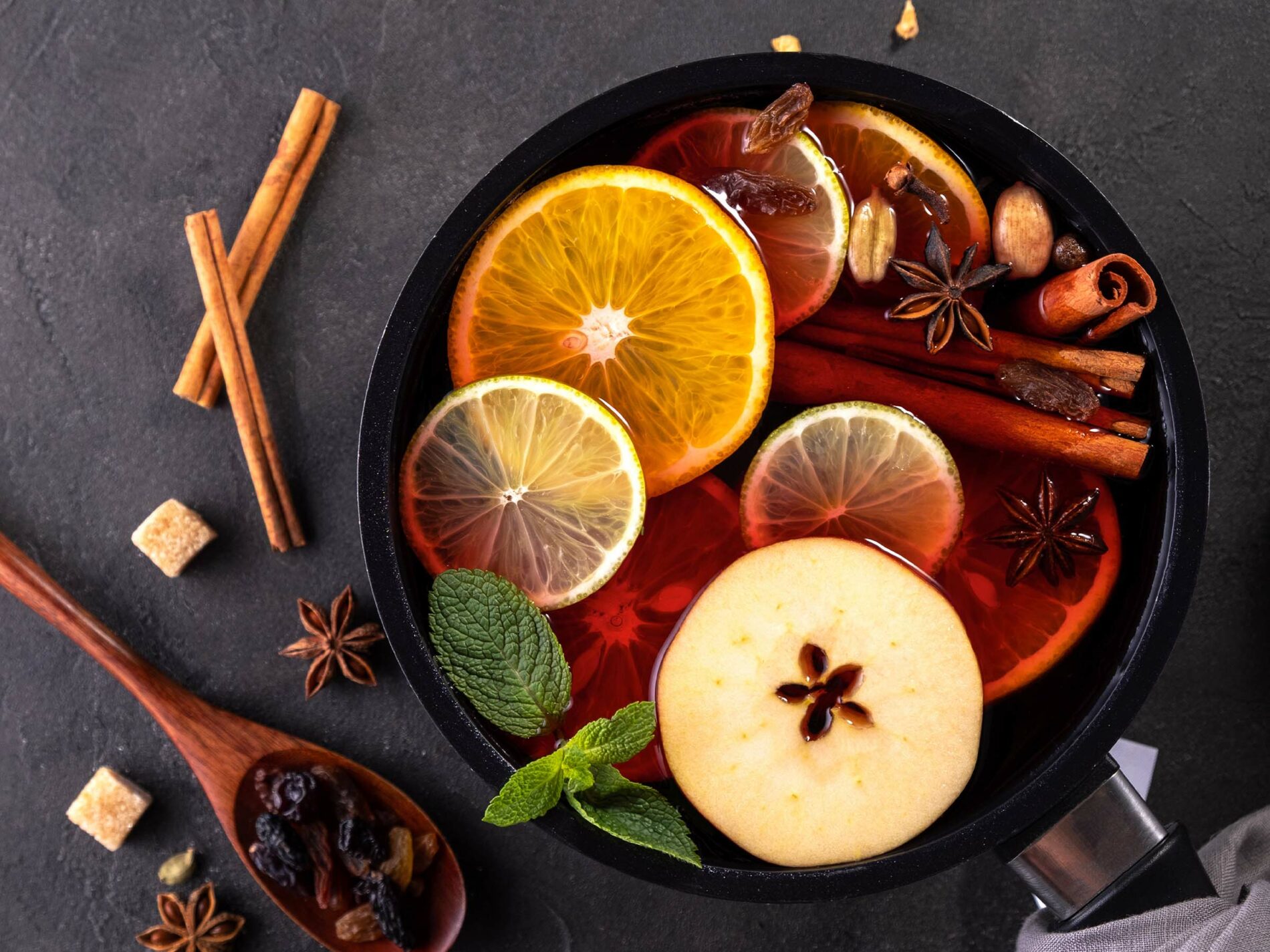The delicious, sweet and spicy aroma of fruits and spices rises to the nose, and a sip warms the inside almost as much as the cup warms the hands. What would the cold season be without mulled wine! But where does the custom actually come from? And how do you make the ultimate mulled wine? We’ll get to the bottom of these two questions in this article – including fun facts.
Mulled wine – a millennia-old custom?
Indeed, mulled wine already existed in antiquity. Even back then, the ancient Greeks refined their red wine with spices. Herbs, honey and fruit were often added. This was because the wine of that time was often sour and could be enhanced with these natural additions. Moreover, the sugar made the wine last longer.
All right, this is not quite mulled wine yet. The warmth is missing. Heat was only added in the Middle Ages, when the wine was heated with a hot stone or even a red-hot fire hoe during the cold season.
Such a spiced wine was even considered a status symbol at that time. After all, only the rich could afford the spices for it, which were imported from distant countries. Pepper, rose water and orange blossom were also added, so that the spiced wine was even considered a panacea.
Mulled wine as we know it from the bottle has only been available since 1956, thanks to the Augsburg wine merchant Rudolf Kunzmann.
This is how you make the ultimate mulled wine
Red or white wine?
Quite simple: it’s a matter of taste. In principle, any wine is suitable for mulled wine. In Germany, for example, there is also mulled wine made from apple wine.
Is that too vague for you? Here are some more suggestions:
- Choose red wines with a strong flavour, for example Pinot Noir or Cuvées.
- Choose delicately bitter white wines with a fruity to spicy note, such as Riesling, Silvaner or Chardonnay.
- Only wines aged in barriques should be avoided: their slightly woody taste does not harmonise well with the sweetness of the mulled wine.
Would you like to make your own mulled wine with real wine? Then try our recipe for white mulled wine!
The finest mulled wine spice
If you often make your own mulled wine, it’s worth always having some mulled wine spice on hand. The perfect composition is of course a matter of taste. Nevertheless, cloves, star anise, cinnamon and the peel of citrus fruits such as oranges or lemons are always a good basis.
For really fine spice, you can grind your ingredients finely in a mortar. It’s best to mix the fresh fruit peels with a little cane sugar to preserve them longer.
And don’t overdo it with the spices! Often less is more. After all, you don’t want to drown out your good wine.
The right temperature
Caution: you should not heat mulled wine above 78 degrees! If it gets hotter, it loses not only its flavour but also its alcohol. That’s why you shouldn’t reheat your mulled wine too often either.
There is also a risk of hydroxymethylfurfural (HMF) forming. This is a product that is formed when sugar is broken down that could be carcinogenic.
In a nutshell: do not boil mulled wine and only heat it briefly.
Mulled wine ready to drink: here’s what you need to watch out for
Don’t have the time or desire to make your own mulled wine? That’s fine too! But be aware that most mulled wines are made from wines of inferior quality and then spiced up with loads of sugar, spices, aromas and additives. Unfortunately, it is often not declared which wine provides the basis for a particular mulled wine. So be sure to look at the list of ingredients in ready-made mulled wines!
You’re better off with mulled wines from winegrowers. They have to adhere to strict guidelines. For example, their mulled wines
- may contain only grapes from their own vineyard,
- must not be diluted with water or fruit juices and
- may contain only natural sugars.
This results in wonderfully individual, high-quality wines, which are often of organic quality. So it’s well worth spending more money on a mulled wine. Feel free to take a look at our selection of wines.
Fun facts about mulled wine
And here are a few fun facts about mulled wine that we’d like to share with you. Did you know that?
- Glühwein usually comes in a paper cup – due to the danger of the water pipes freezing below 6 degrees, making it impossible to wash the glasses at the stalls.
- There is a law that says mulled wine must contain at least 7 % alcohol. 14.5 % is the maximum. (We’ll let you decide whether non-alcoholic mulled wine is therefore not mulled wine 😉)
- Stains from mulled wine? Best removed with salt, which you leave to soak in and brush off later. It extracts the liquid from the fabric.
We definitely crave a mulled wine right now! How about you?











What do you think?